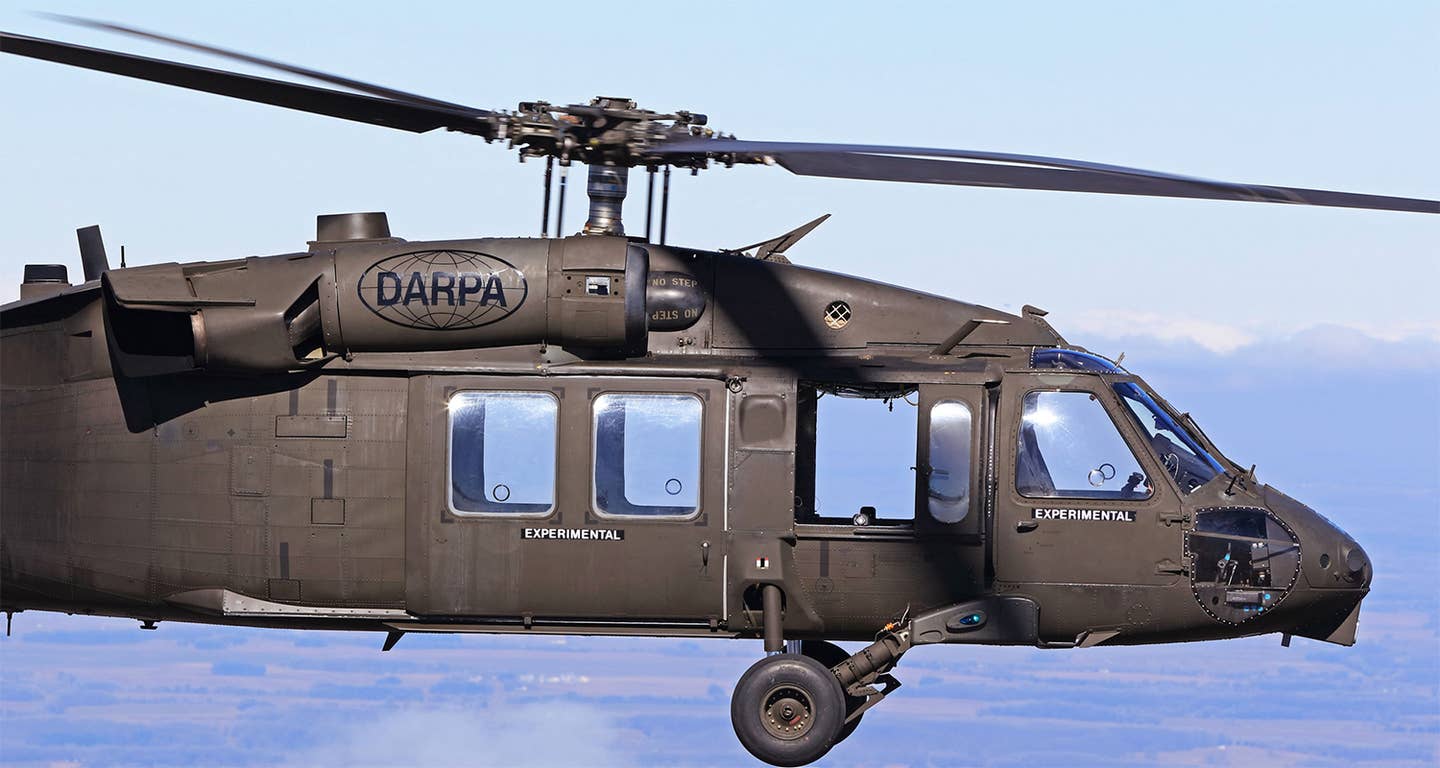A UH-60A Black Hawk Just Flew With No Pilot On Board
DARPA’s Aircrew Labor In-Cockpit Automation System program conducted the unmanned autonomous demonstration flight.

The helicopter was retrofitted with Sikorsky Matrix autonomy technology. [Courtesy: Lockheed Martin]
A UH-60A Black Hawk recently took a 30-minute flight over Fort Campbell, Kentucky, with no pilot or crew on board. In fact, no one was on board the helicopter at all, according to the Defense Advanced Research Projects Agency (DARPA).
The February 5 uncrewed flight of the Army Black Hawk helicopter retrofitted with automation technology—a first for the aircraft—was conducted by DARPA's Aircrew Labor In-Cockpit Automation System (ALIAS) program.
"With reduced workloads pilots can focus on mission management instead of the mechanics."
Stuart Young, program manager in DARPA’s Tactical Technology Office
The helicopter was retrofitted with Sikorsky Matrix autonomy technology, which forms the core of the ALIAS program and is described as "like a virtual second pilot."
During the 30-minute flight, the Black Hawk flew "at typical speed and altitude through a simulated cityscape, avoiding imagined buildings while route re-planning in real time," Lockheed Martin Sikorsky said. The helicopter then executed a series of pedal turns, maneuvers, and straightaways, before completing a perfect landing, all autonomously, the company said.
A second flight took place February 7, DARPA said.
How and Why it Works
According to the agency, ALIAS architecture draws on advances in automation systems and remote piloted aircraft, and allows the retrofitting of manned aircraft with an automation platform that enables safe flight operations with reduced crews. It supports entire missions from takeoff to landing. It can also be tailored for selectable levels of autonomy.
“With reduced workloads pilots can focus on mission management instead of the mechanics,” Stuart Young, program manager in DARPA’s Tactical Technology Office, said Tuesday.
The autonomous platform offers operational flexibility, including the ability to operate an aircraft at any time of day, with or without pilots and in a variety of difficult conditions, he said.
"One of the main objectives that we had in doing this demonstration was to facilitate transition of this DARPA technology from DARPA to the Army, in particular," Young said during a press conference Tuesday. "Obviously, all of the services are interested in this, but in this case, showing this on the UH-60A Black Hawk OPV…we have demonstrated, removed the safety net from our autonomous operation. We want to now provide that to the Army so they can own it and use it on their own to develop autonomy requirements," he said.
The ALIAS program, which has been in existence for six years, has demonstrated the Matrix software on 14 different aircraft, Young said.
"This capability will allow pilots to confidently switch back and forth between autonomy and piloted modes at any point of their mission with the literal flip of a switch," Benjamin Williamson, lead test pilot at the event, said in a statement. "This will support autonomous flight during a wide range of missions such as flight in degraded visual environments (DVE) and confined areas. Most critically, ALIAS will be capable of automatically detecting and preventing dangerous situations that lead to accidents, thereby saving lives.”
ALIAS program officials plan to conduct a first flight of a fly-by-wire M-model Black Hawk at Fort Eustis, Virginia, within the next month, DARPA said.

Sign-up for newsletters & special offers!
Get the latest FLYING stories & special offers delivered directly to your inbox






